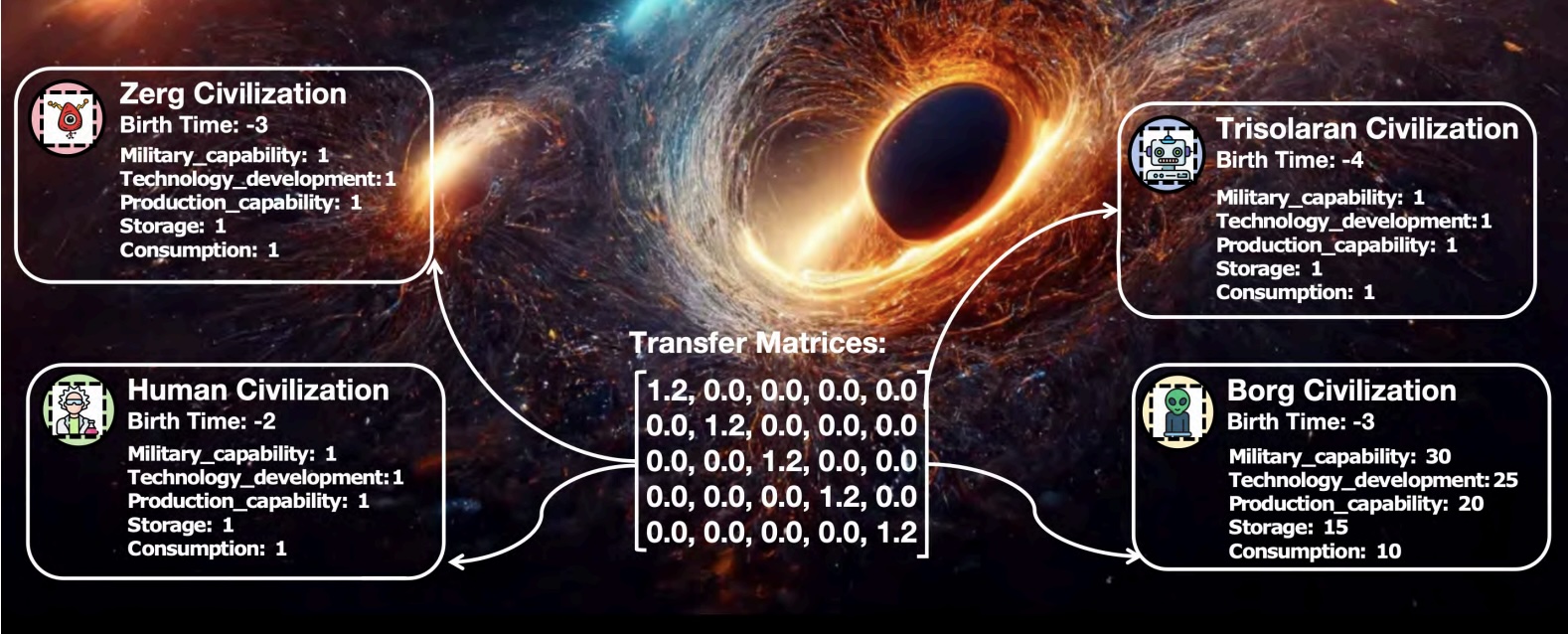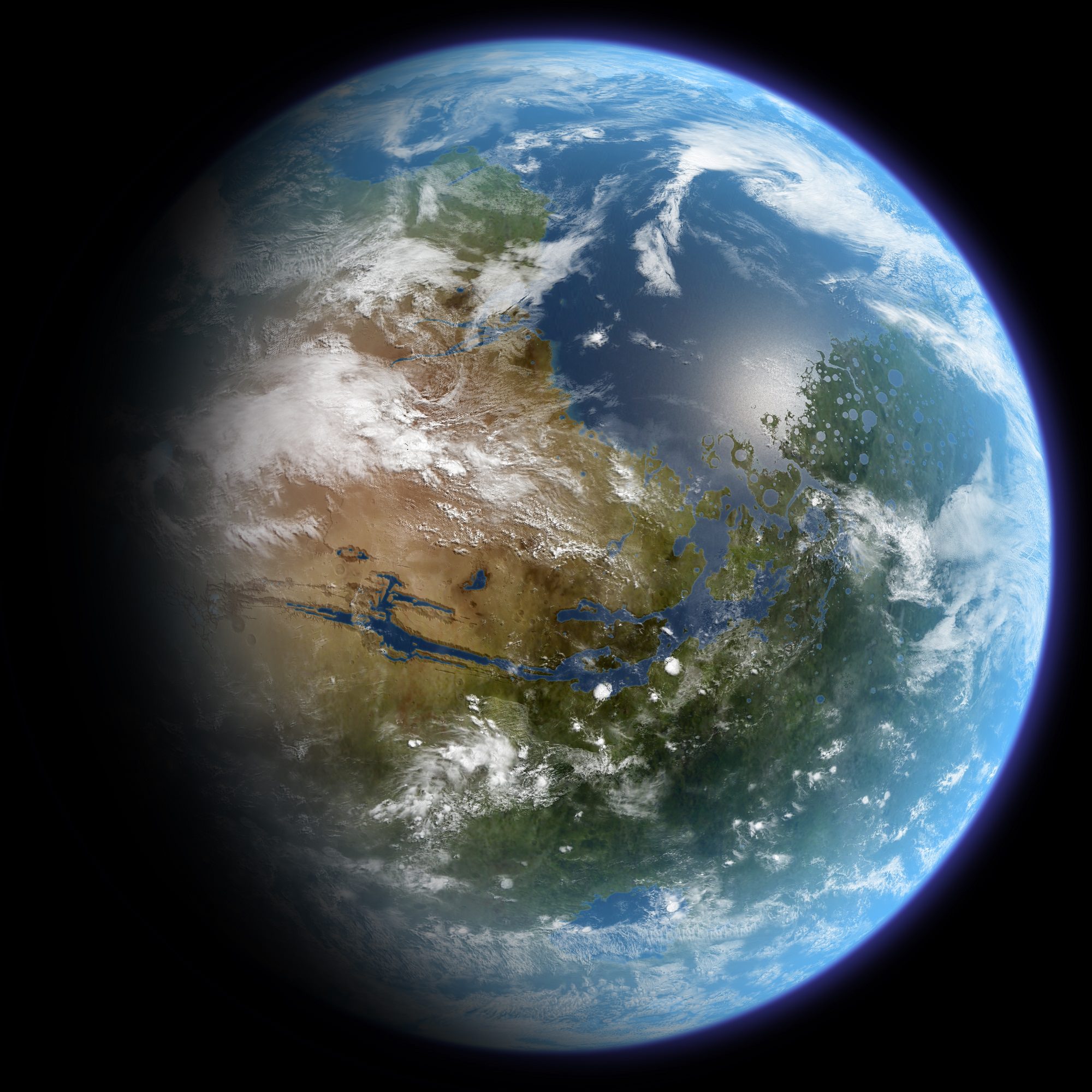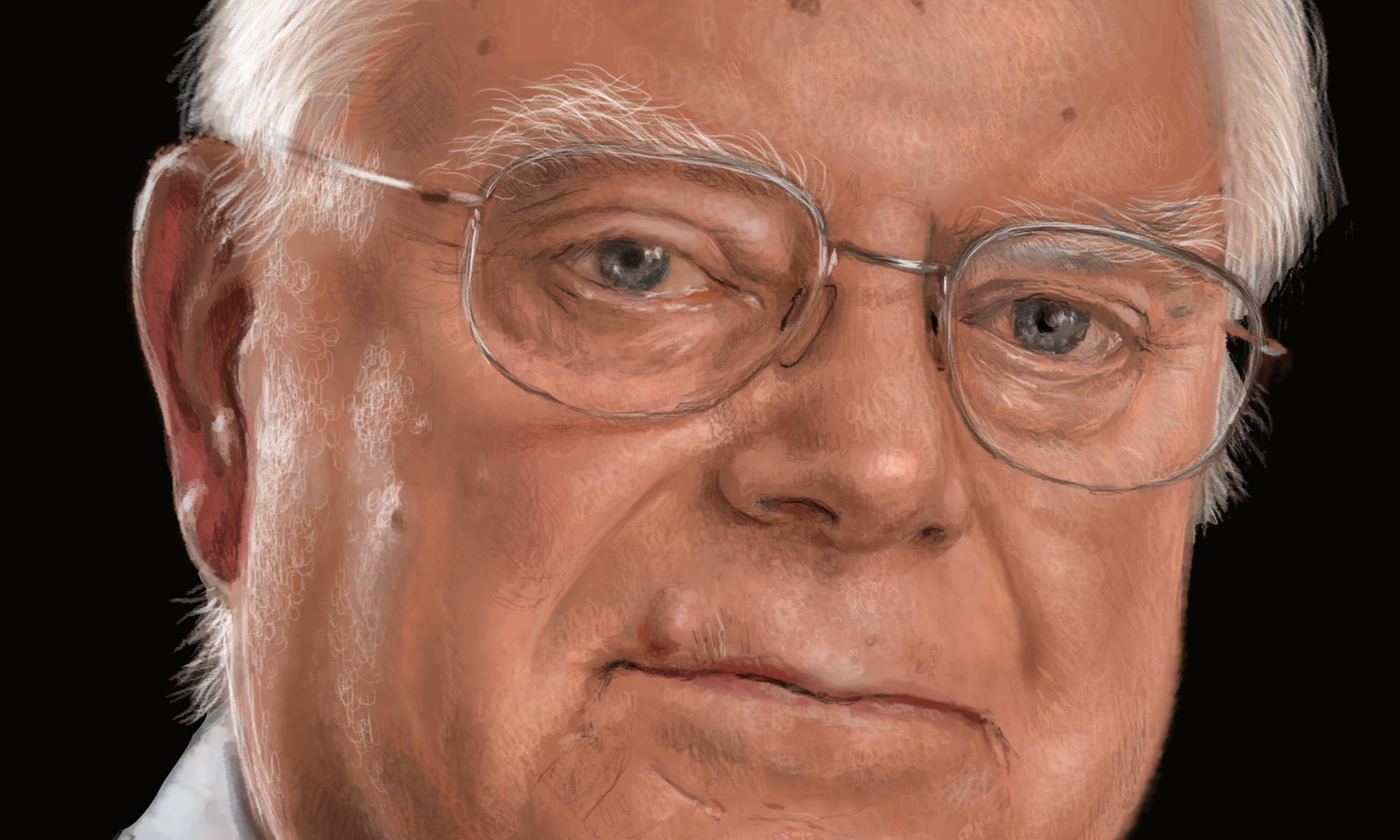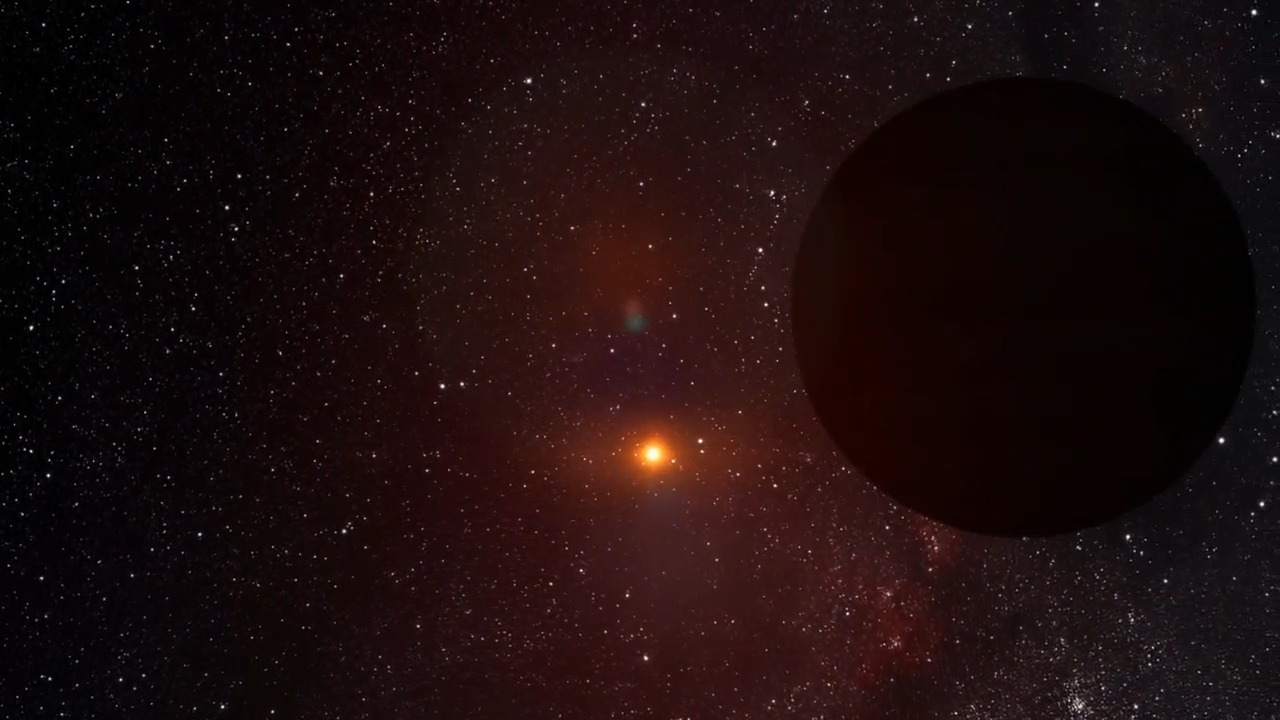The possibility for life beyond the Earth has captivated us for hundreds of years. It has been on the mind of science fiction writers too as our imaginations have explored the myriad possibilities of extraterrestrial life. But what would it really be like if/when we finally meet one; would it lead to war or peace? Researchers have used a complex language model to simulate the first conversations with civilisations from pacifists to militarists and the outcomes revealed interesting challenges.
Continue reading “An AI Simulated Interactions Between Different Kinds of Advanced Civilizations”Some Intelligent Civilizations Will Be Trapped on their Worlds

Evolution has produced a wondrously diverse variety of lifeforms here on Earth. It just so happens that talking primates with opposable thumbs rose to the top and are building a spacefaring civilization. And we’re land-dwellers. But what about other planets? If the dominant species on an ocean world builds a technological civilization of some sort, would they be able to escape their ocean home and explore space?
Continue reading “Some Intelligent Civilizations Will Be Trapped on their Worlds”Can Alien Civilizations Detect Humanity?
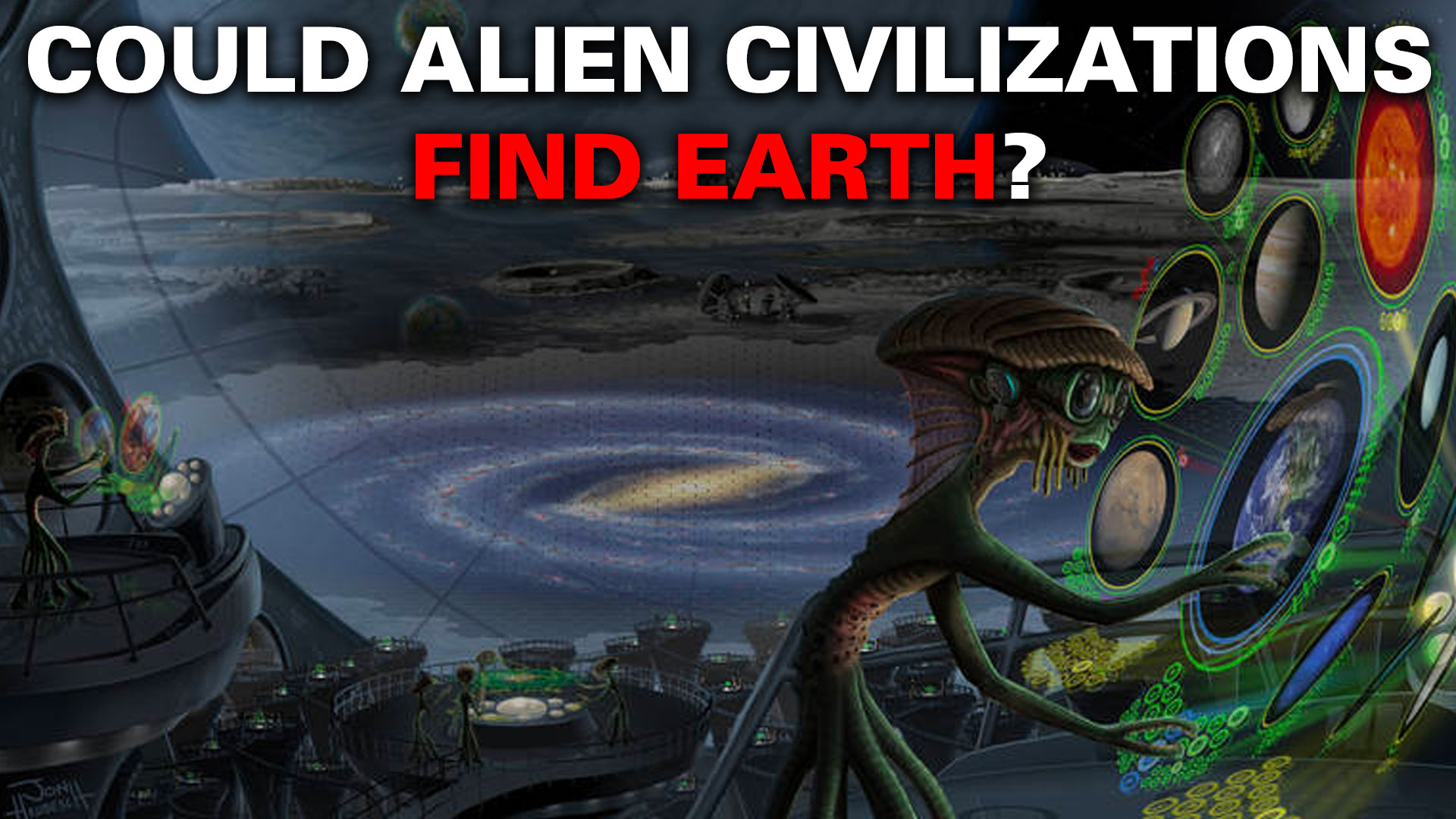
One of the fascinating things about being a human in this age is that we can do more than wonder about other life and other civilizations. We can actually look for them, although there are obvious limitations to our search. But what’s equally fascinating is that we can wonder if others can see us.
Continue reading “Can Alien Civilizations Detect Humanity?”Since Aliens Obey the Laws of Physics, Can We Guess What They Look Like?
Since time immemorial, humans have gazed up at the stars and wondered if we’re alone in the universe. We have asked if there are other intelligent beings out there in the vastness of the cosmos, also known as extraterrestrial intelligence (ET). Yet, despite our best efforts, we have yet to confirm the existence of ET outside of the Earth. While the search continues, it’s fair to speculate if they might look “human” or humanoid in appearance, or if they could look like something else entirely. Here, we present a general examination and discussion with astrobiologists pertaining to what ET might look like and what environmental parameters (e.g., gravity, atmospheric makeup, stellar activity) might cause them to evolve differently than humans.
Continue reading “Since Aliens Obey the Laws of Physics, Can We Guess What They Look Like?”Could We Find Aliens Terraforming Other Worlds?
The first early humans to use fire had no inkling of what it would lead to.
Fire was one of our first technologies, and humans have been making changes to their environments since the advent of controlled fire hundreds of thousands of years ago. Fast forward to current times, and our modern technological and global civilization is changing the Earth’s entire biosphere. From carbon emissions that acidify the oceans and weaken the shells of marine life to microplastics that find their way into organisms’ bloodstreams, our technology is intersecting, or combining, with the biosphere.
This has spawned a useful word: biotechnosphere.
Continue reading “Could We Find Aliens Terraforming Other Worlds?”Astronomers are Searching for a Galaxy-Wide Transmitter Beacon at the Center of the Milky Way

It has been over sixty years since the first Search for Extraterrestrial Intelligence (SETI) survey occurred. This was Project Ozma, a survey led by Dr. Frank Drake (who devised the Drake Equation) that used the National Radio Astronomy Observatory (NRAO) in Green Bank, West Virginia, to listen for radio transmissions from Epsilon Eridani and Tau Ceti. While the search revealed nothing of interest, it paved the way for decades of research, theory, and attempts to find evidence of technological activity (aka. “technosignatures”).
The search continues today, with researchers using next-generation instruments and analytical methods to find the “needle in the cosmic haystack.” This is the purpose behind Breakthrough Listen Investigation for Periodic Spectral Signals (BLIPSS), a collaborative SETI project led by Cornell graduate student Akshay Suresh to look for technosignatures at the center of the Milky Way. In a recent paper, Suresh and his team shared their initial findings, which were made possible thanks to data obtained by the Greenbank Observatory and a proprietary algorithm they developed.
Continue reading “Astronomers are Searching for a Galaxy-Wide Transmitter Beacon at the Center of the Milky Way”Game of Probes: The First Probe Sent to Another Civilization Won’t Be the First to Arrive

If we ever detect an Extraterrestrial Civilization (ETC) and start communicating with them, the messages could take years, decades, or even centuries to travel back and forth. We face a challenging 49-minute long delay just communicating with the Juno spacecraft orbiting Jupiter, and that’s well within our Solar System. Communicating with an ETC that’s hundreds of light-years away or even further is a daunting task.
It’s even worse if we’re sending probes.
Continue reading “Game of Probes: The First Probe Sent to Another Civilization Won’t Be the First to Arrive”Gravitational Wave Observatories Could Search for Warp Drive Signatures

In 2016, scientists at the Laser Interferometer Gravitational-Wave Observatory (LIGO) announced that they had made the first confirmed detection of gravitational waves (GWs). This discovery confirmed a prediction made a century before by Einstein and his Theory of General Relativity and opened the door to a whole new field of astrophysical research. By studying the waves caused by the merger of massive objects, scientists could probe the interior of neutron stars, detect dark matter, and discover new particles around supermassive black holes (SMBHs).
According to new research led by the Advanced Propulsion Laboratory at Applied Physics (APL-AP), GWs could also be used in the Search for Extraterrestrial Intelligence (SETI). As they state in their paper, LIGO and other observatories (like Virgo and KAGRA) have the potential to look for GWs created by Rapid And/or Massive Accelerating spacecraft (RAMAcraft). By combining the power of these and next-generation observatories, we could create a RAMAcraft Detection And Ranging (RAMADAR) system that could probe all the stars in the Milky Way (100 to 200 billion) for signs of warp-drive-like signatures.
Continue reading “Gravitational Wave Observatories Could Search for Warp Drive Signatures”
